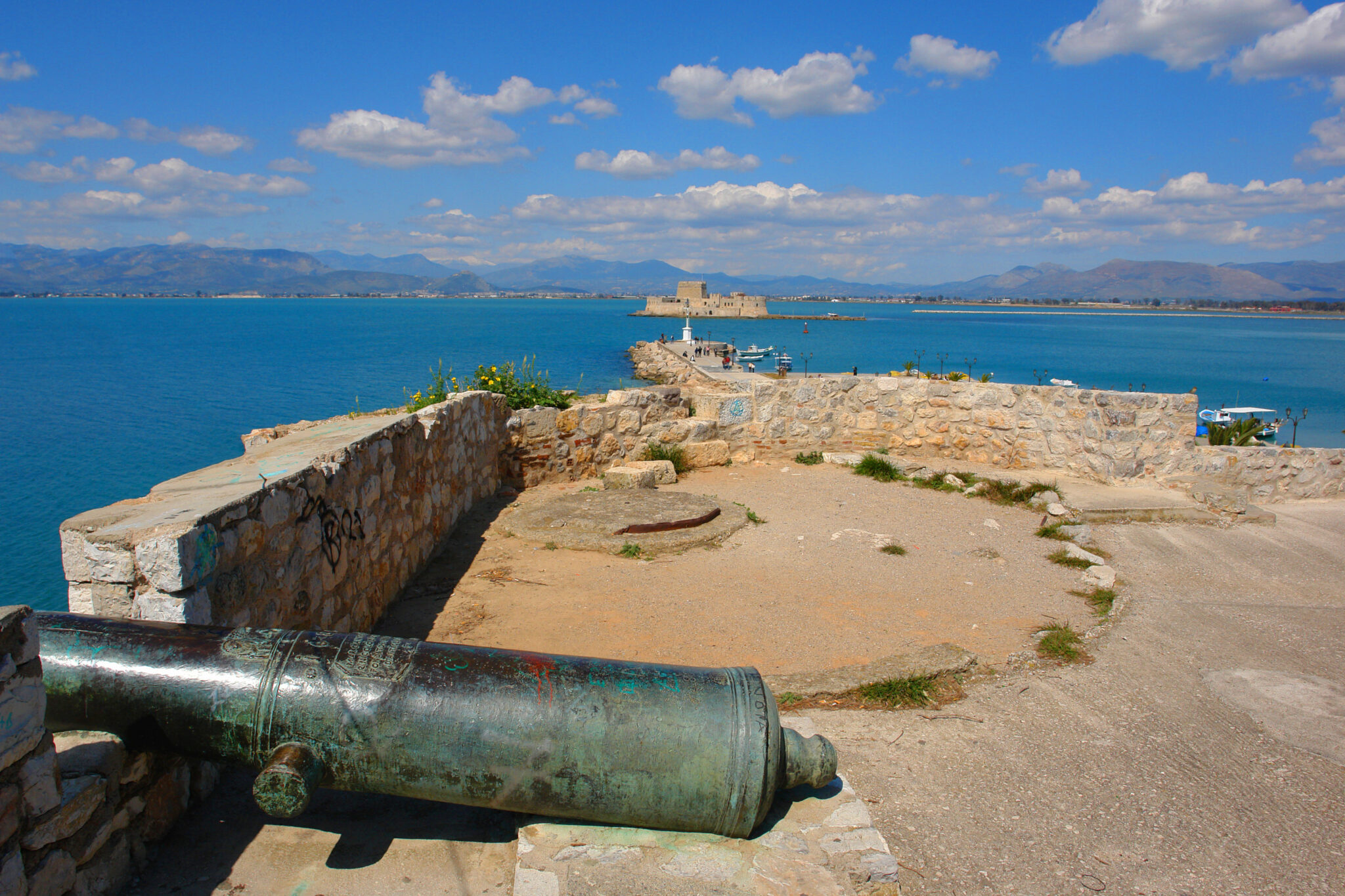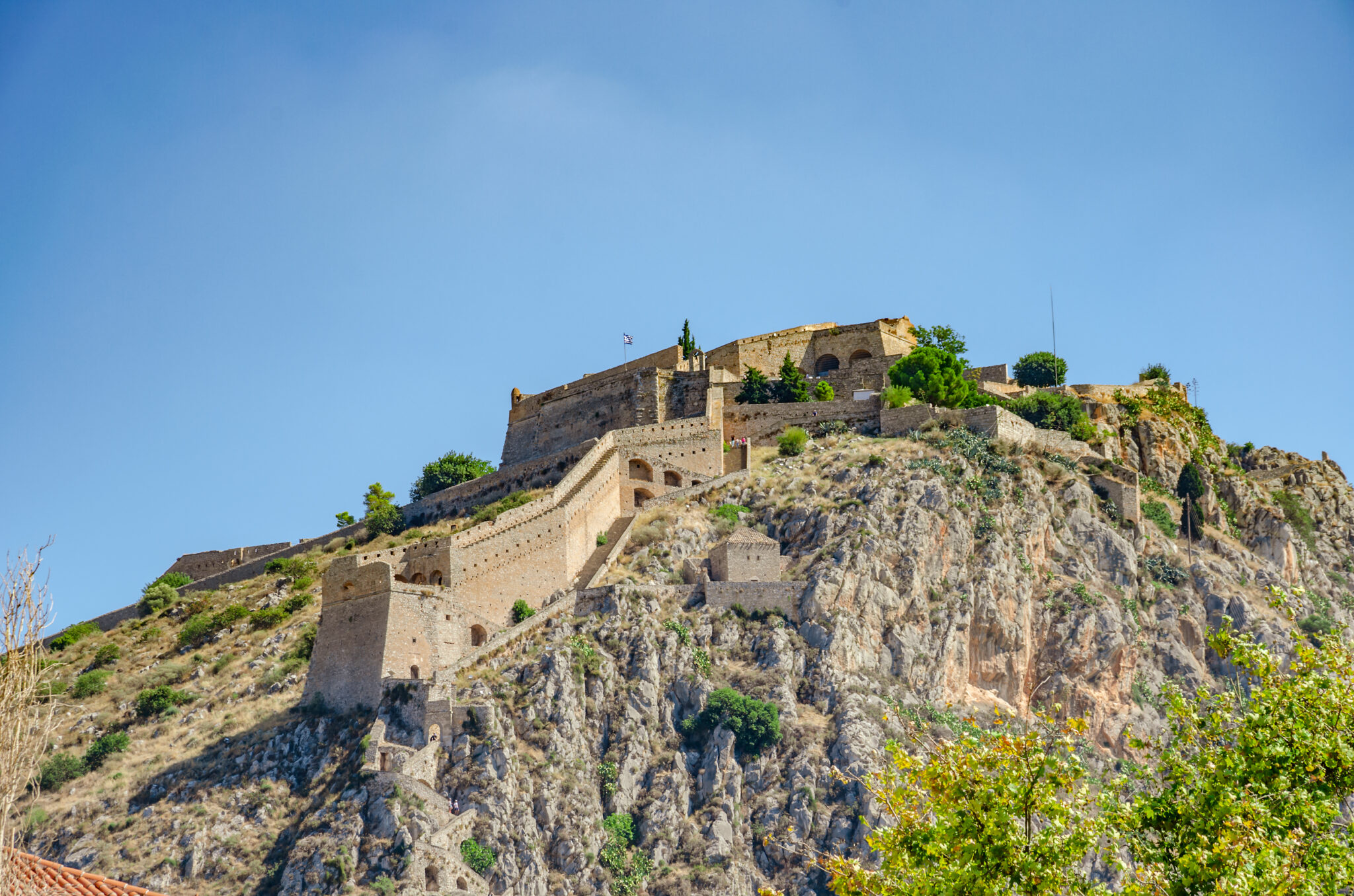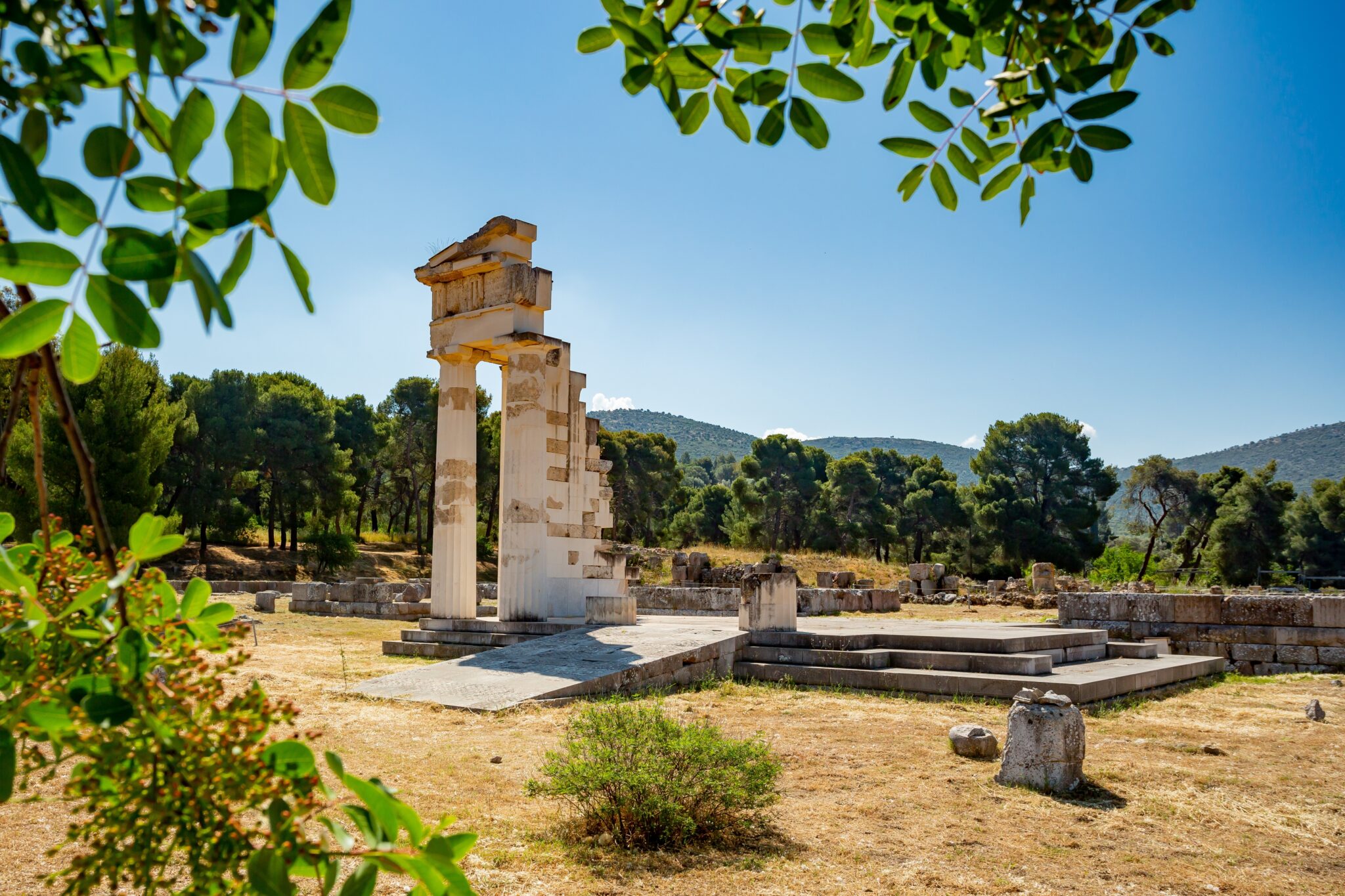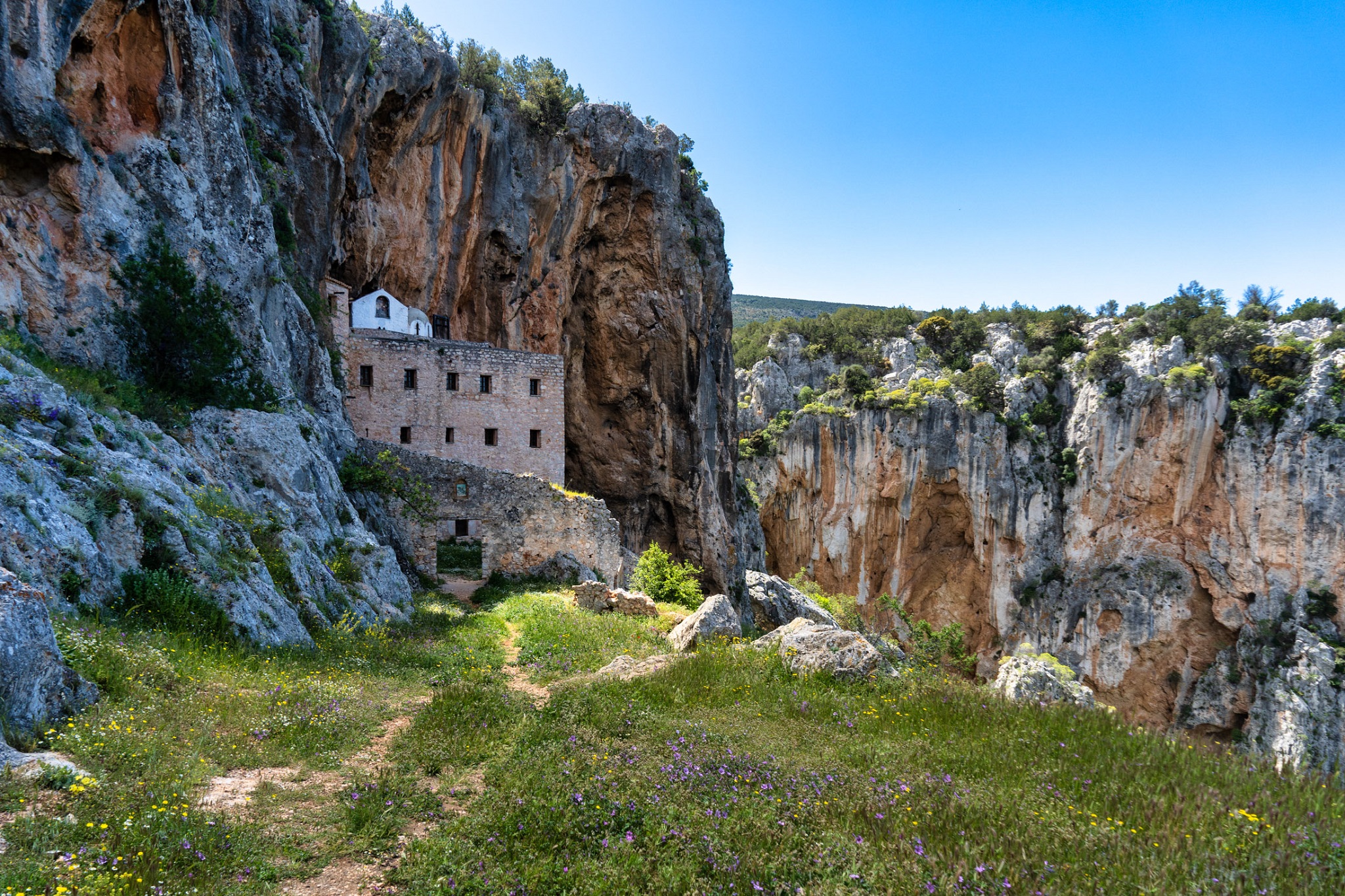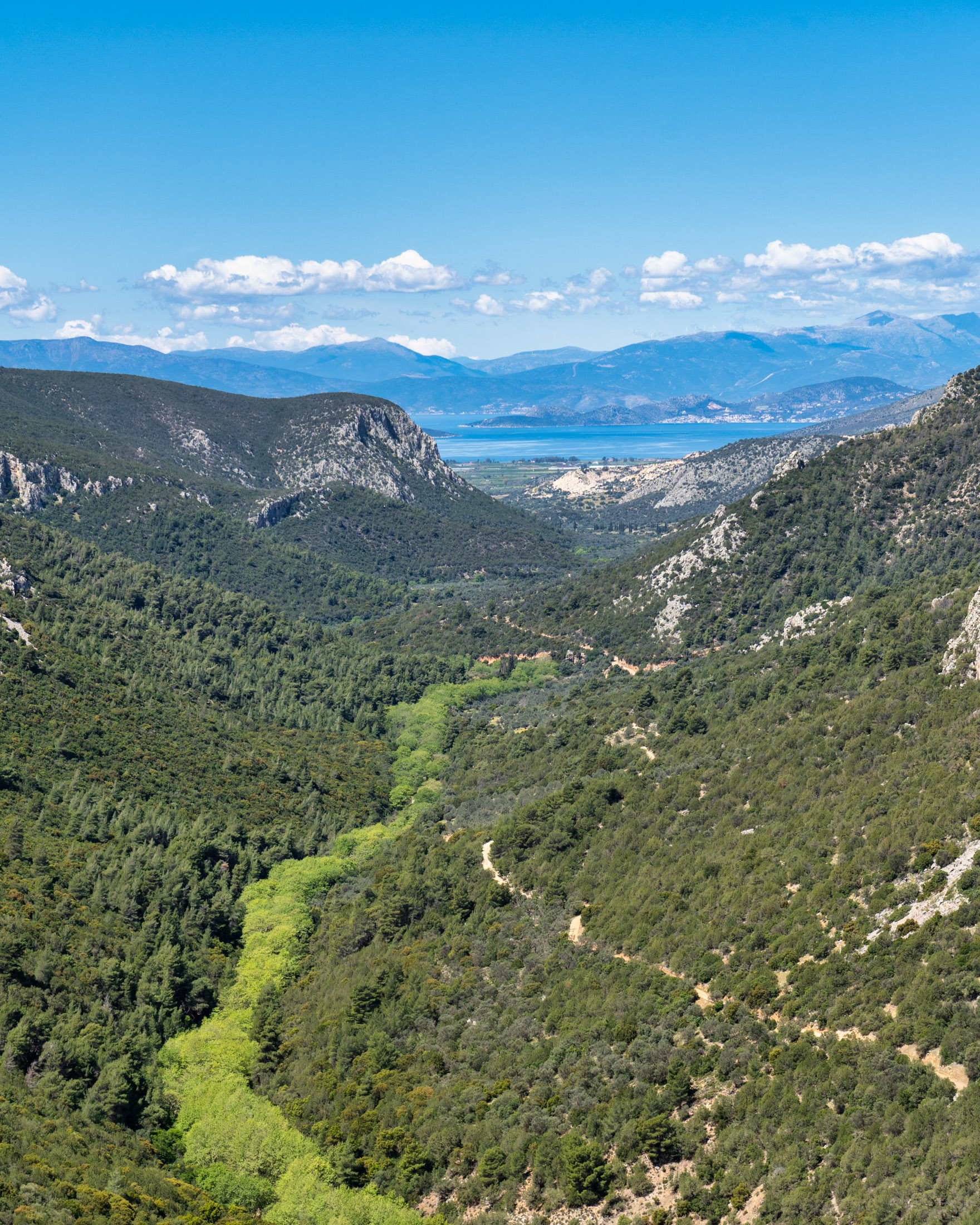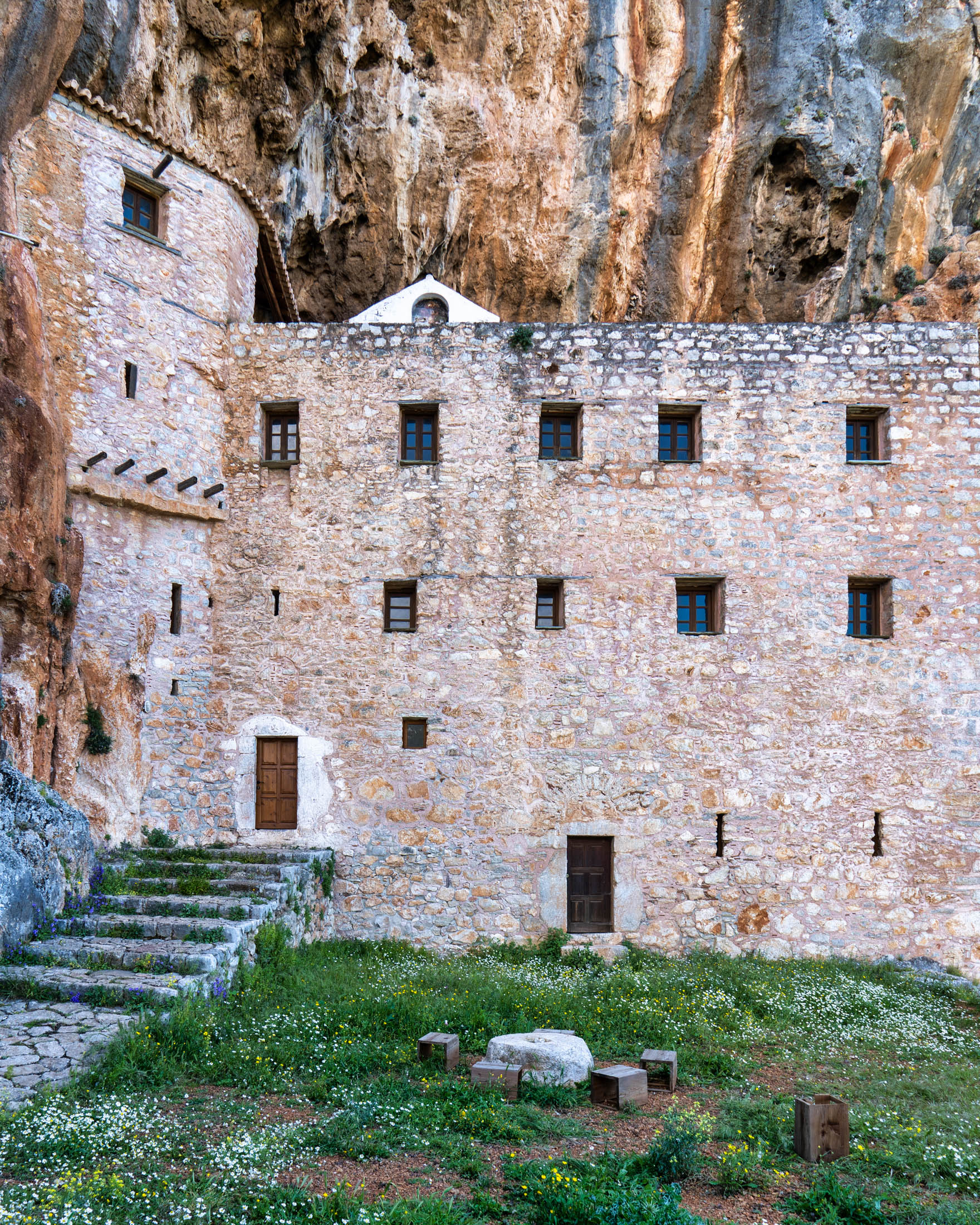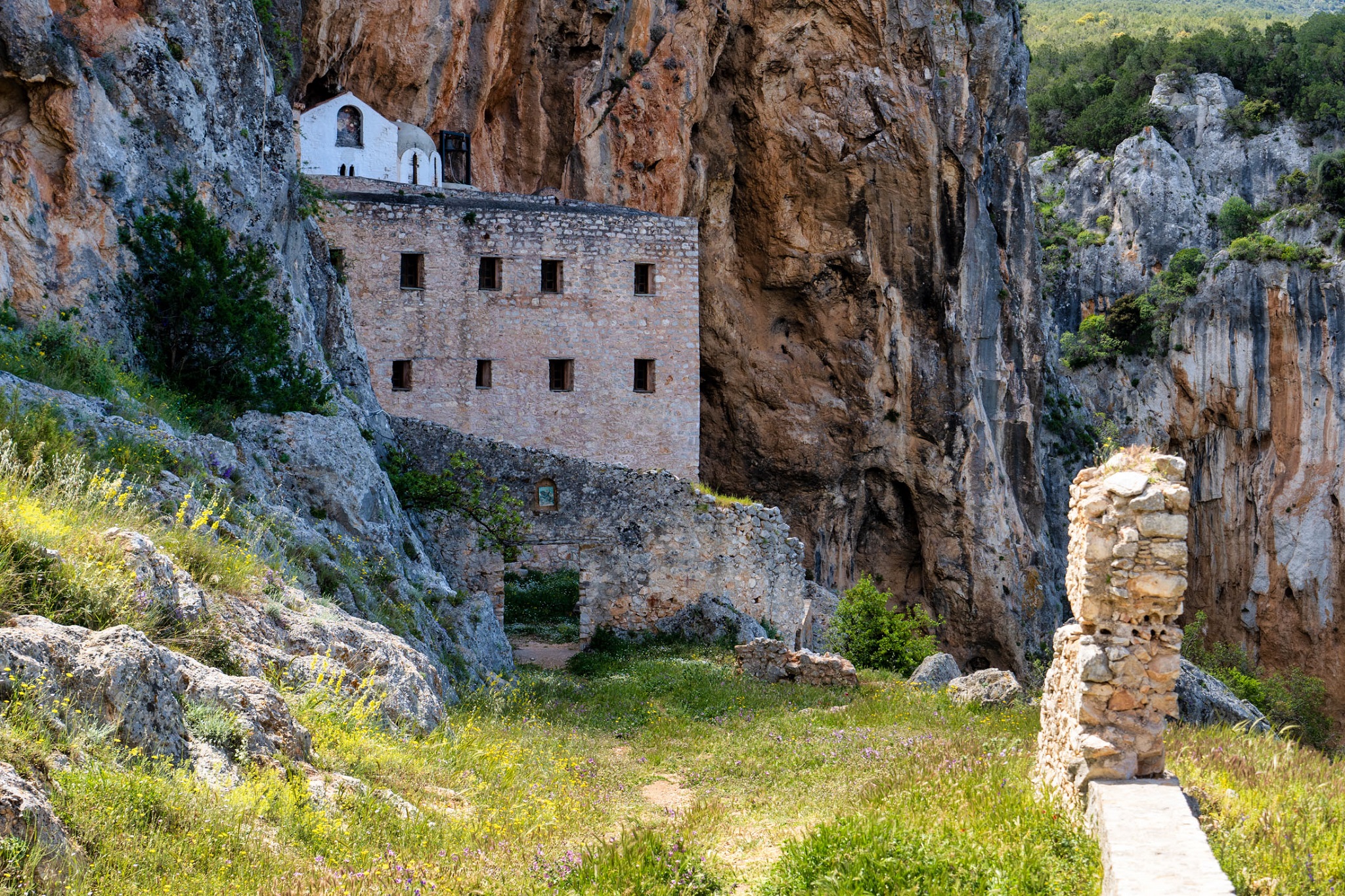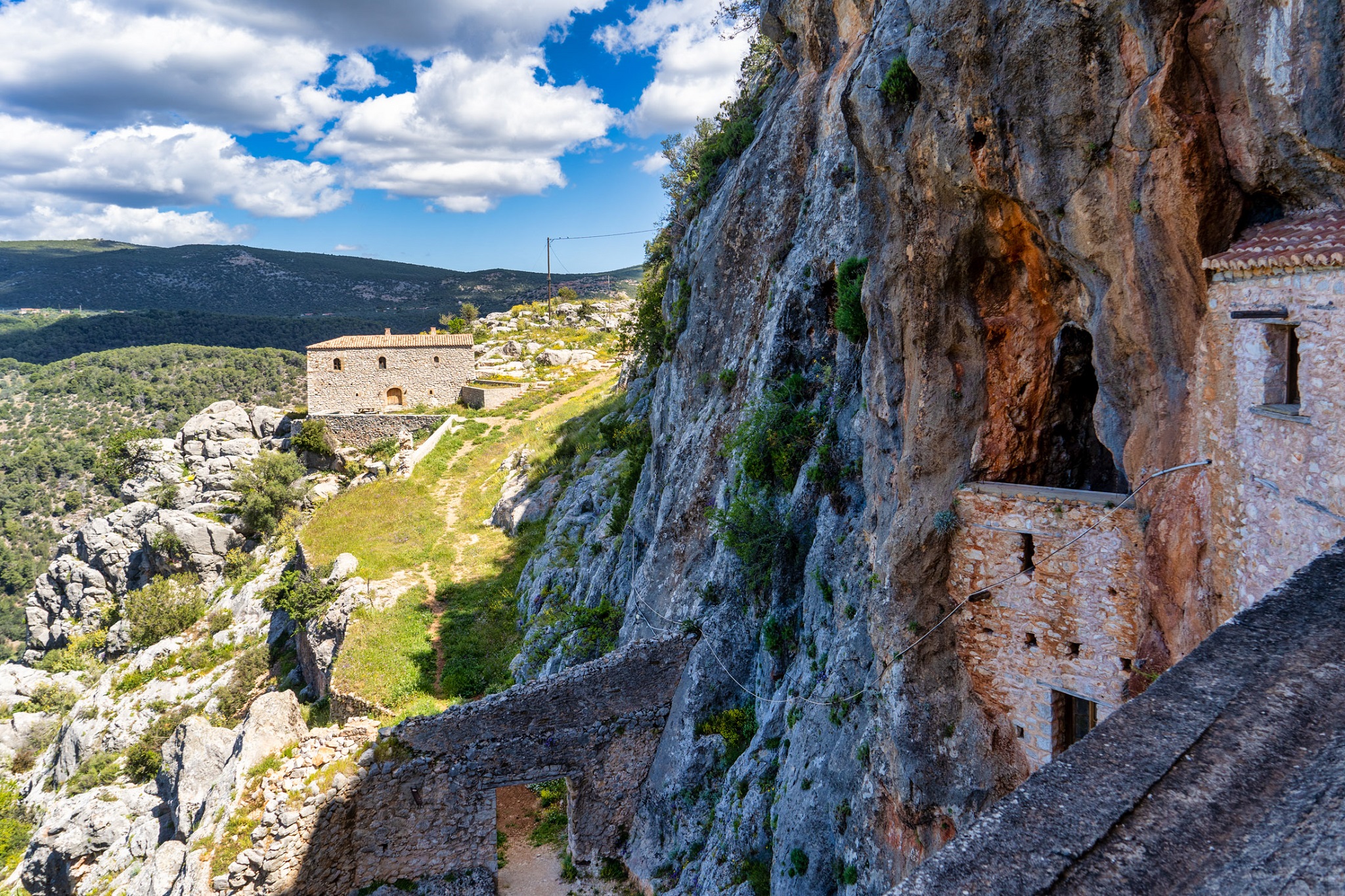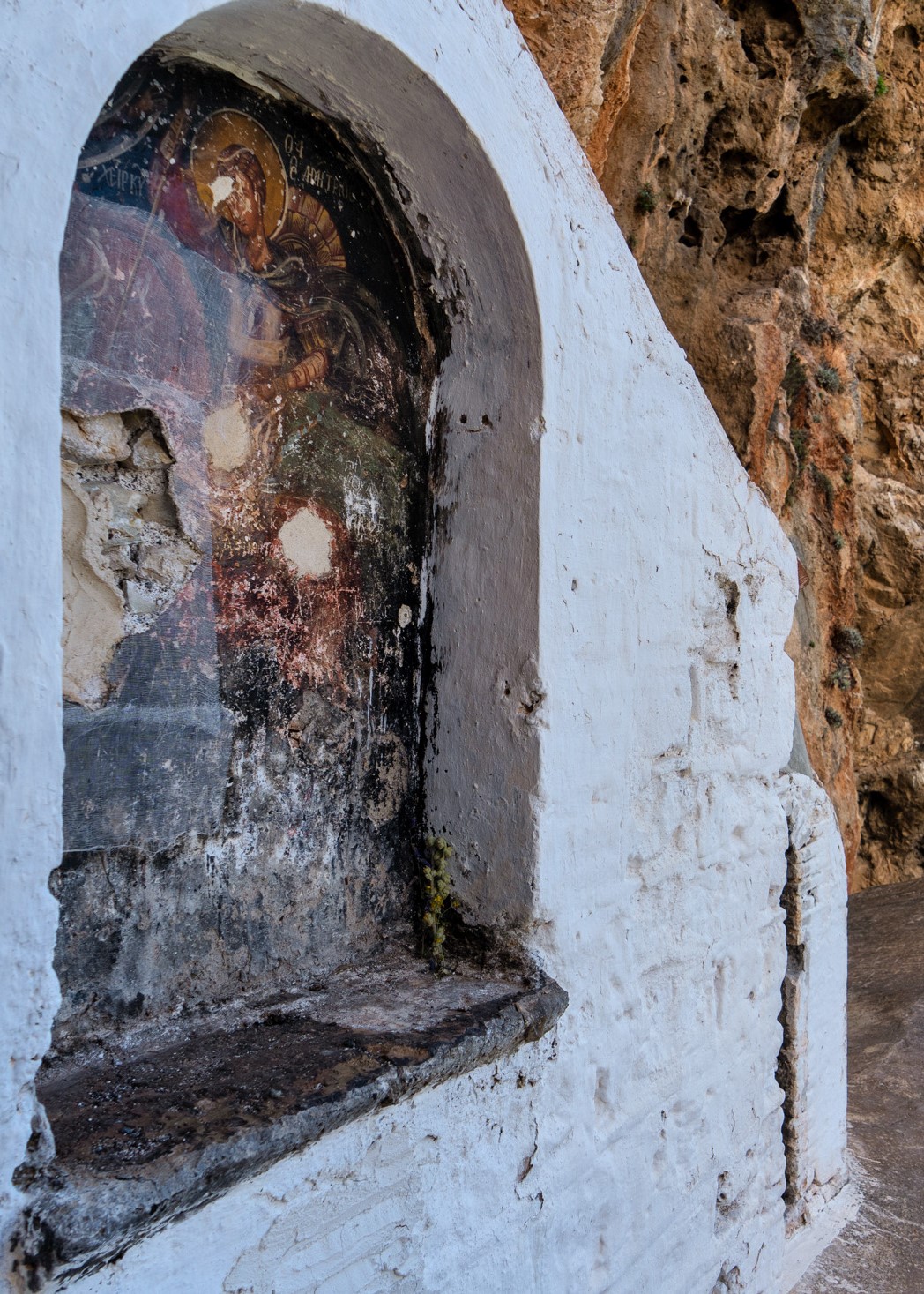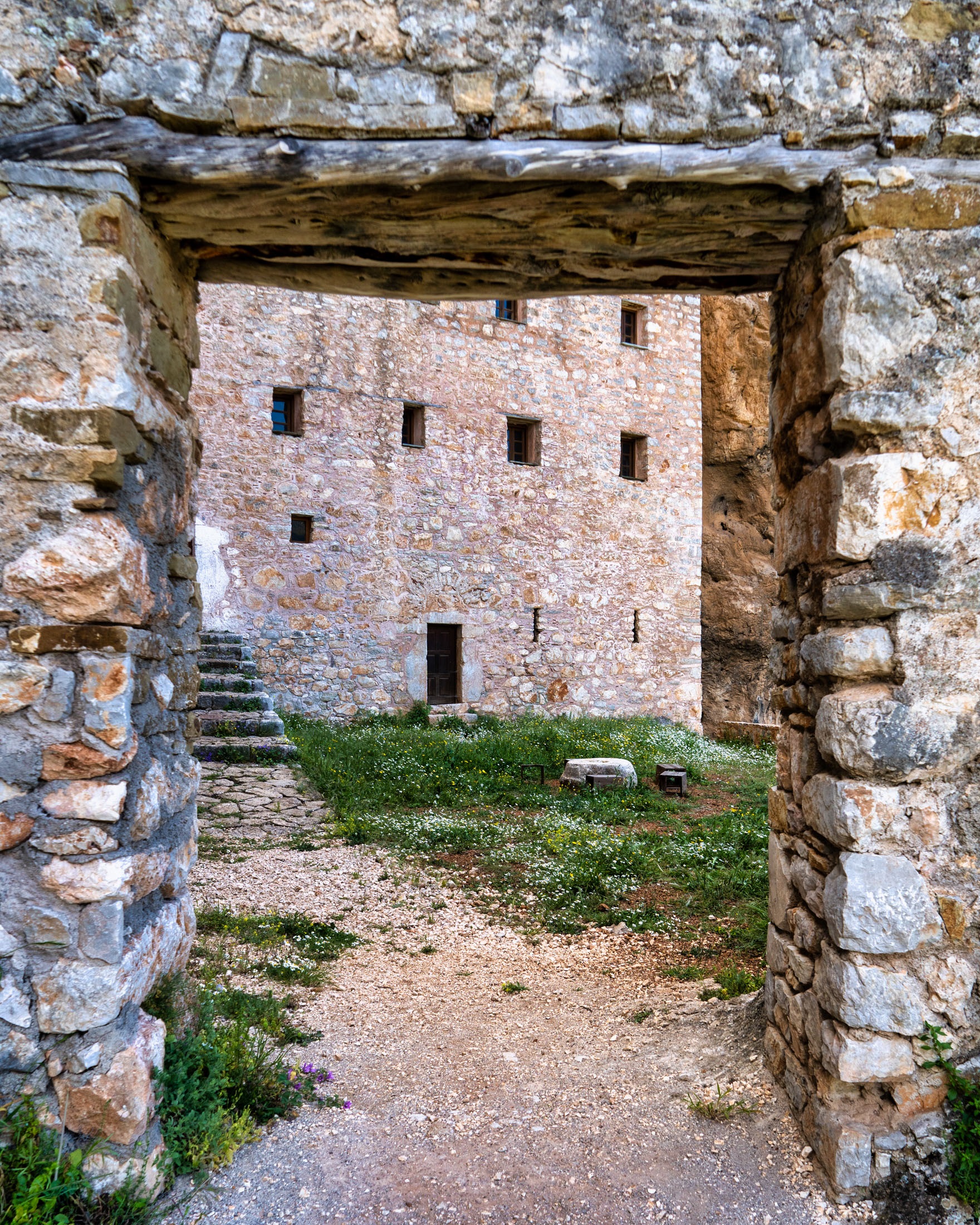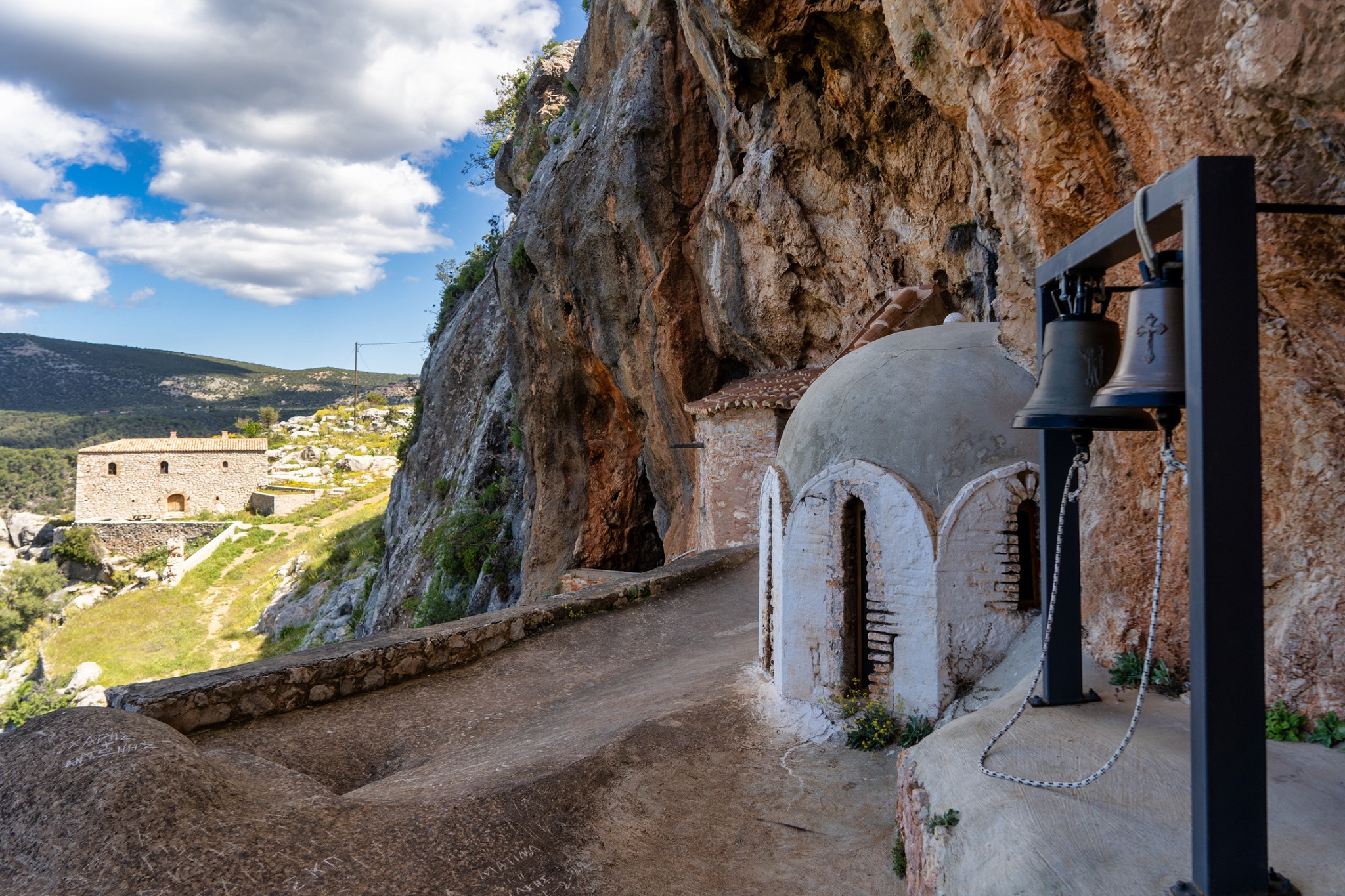It’s 10 in the morning. At an altitude of 850 meters, on the northern slopes of Mount Avgo in the Didymon mountain range. We’re at a place the locals call “Vrachia”.
We began our journey from the village of Didyma, having scaled the slopes, and after an 8 kilometer drive on a dirt road, we stop. We gaze around, inhale the mountain air and feel. Awe, emotion, trepidation and admiration succeed one another. We are at the Monastery of Saint Dimitrios, also known as the Monastery of Avgo.
This is a pilgrimage unlike any other. No matter who you are or what beliefs you hold, you cannot remain indifferent to the sight of the stone monastery nestled against the sheer cliffs, flirting with the precipices, and surviving in-spite of the calamities it has suffered.
The weight of centuries rests on its shoulders, as much as they are supported by the walls of the rocks. Until 1990, when extensive restoration work was carried out by the Directorate of Restoration of Byzantine and Post-Byzantine Monuments, the monastery was half-demolished.
A monastery carved into the rocks
Leaving the renovated mansion built in the 18th century behind us, we will pass through the gate and arrive at the small entrance door. Looking up, you can’t help but feel incredibly small before the grandeur of the fortress-like complex with its tiny windows. The monks who built it and carved into the caves labored in this isolated place, forever marrying it with the majestic rocks filled with veins of gray, red, and orange that tumble down like streams around it. These are “gigantic joints of creation,” as described by a travel writer.
The towering structures that have given the monastery its fortress-like character are to the left of the entrance and have crenelations along with rows of loopholes. The main building is two-storied. According to a 1691 Venetian census and testimonies from historians and travelers, the monastery had other buildings to the west, on the brow of Rados gorge.
Bowing, we will ascend the narrow steep stairs, pass the first floor with its empty cells, and reach the second. The doors of the cells, like the entrance, are incredibly small and at a height that only a child can pass standing upright. Defensive reasons dictated their size, giving the defenders the opportunity to strike the enemy who was forced to enter bent over.
So, bending down, we will enter the two-storied monastery with three of its sides carved into the rock. Beams of light illuminate it, gently caressing the half-destroyed frescoes. Even experienced directors of photography would struggle to achieve this effect.
In the glow of the candles that we’ll light, the stone shells, the cruciform domes, the Sacred Stand, the arches, and the bow-shaped gates emerge one after another from the darkness. The main church is dedicated to Saint Demetrius, and the smaller one to the two saints called Theodore. A fire destroyed the gilded carved iconostasis and the murals in the chapel of Saint Demetrius, and blackened the murals in that of the Saints Theodore, which have been dated back to the 17th century.
From yet another precipitous staircase, we’ll then step onto the roof, with the bell tower and the silent bell. The dome of the chapel of Saints Theodore stands out, whitewashed – the only white element in the grey stone complex of the monastery. Next to it, a very narrow opening leads to the cave-chapel of the Transfiguration. There, the fragments of murals are believed to date back to the 11th century.
Walking to the edge of the ‘terrace’, we’ll feel as though we are ready to take flight: beneath us are the vertical cliffs and the ravine of the River Rados, around us a landscape that seems limitless, with a view reaching as far as Nafplio.
A story that begins in the 11th century
The unusual name of the monastery is linked to various folk legends and myths, however, it is most likely derived from the phrase ‘bare peak’ resembling an egg – characteristic of Mount Avgo where it was built. According to experts, it was established in the 11th century from small hermitages that existed in the caves. Various stages followed both in the construction and in the iconography. Altogether, the complex has been dated to the second half of the 15th to the first half of the 16th century. It has been protected since 1925 as a Byzantine monument and archaeological site.
Although it may seem difficult to imagine today, the complex was large and included a three-story tower, cells, a refectory and a kitchen, a threshing floor, and a watermill. It owned three chapels and maintained a large estate. It is reported that “in 1696 it housed 30 monks, many servants, and had a vast estate.” Later, in an 1820 record, it is noted that it had 8 monks and abandoned properties.
How did everything vanish? The monastery took part in the 1821 Revolution and was set on fire by Ibrahim’s army on June 15, 1825. It started to operate again later but closed permanently in 1833 when King Otto abolished the monasteries that had fewer than 6 monks. Its estate was auctioned off, and no one knows what became of the religious relics and icons.
Read also:
Agios Pavlos: Secluded beach with superb waters, small Byzantine church
Dobro Pole: The Pella Plateau with Dazzling Forests and Lagoons
Agra: The Pella Lake that evolved into one of Greece’s Most Beautiful Wetlands



